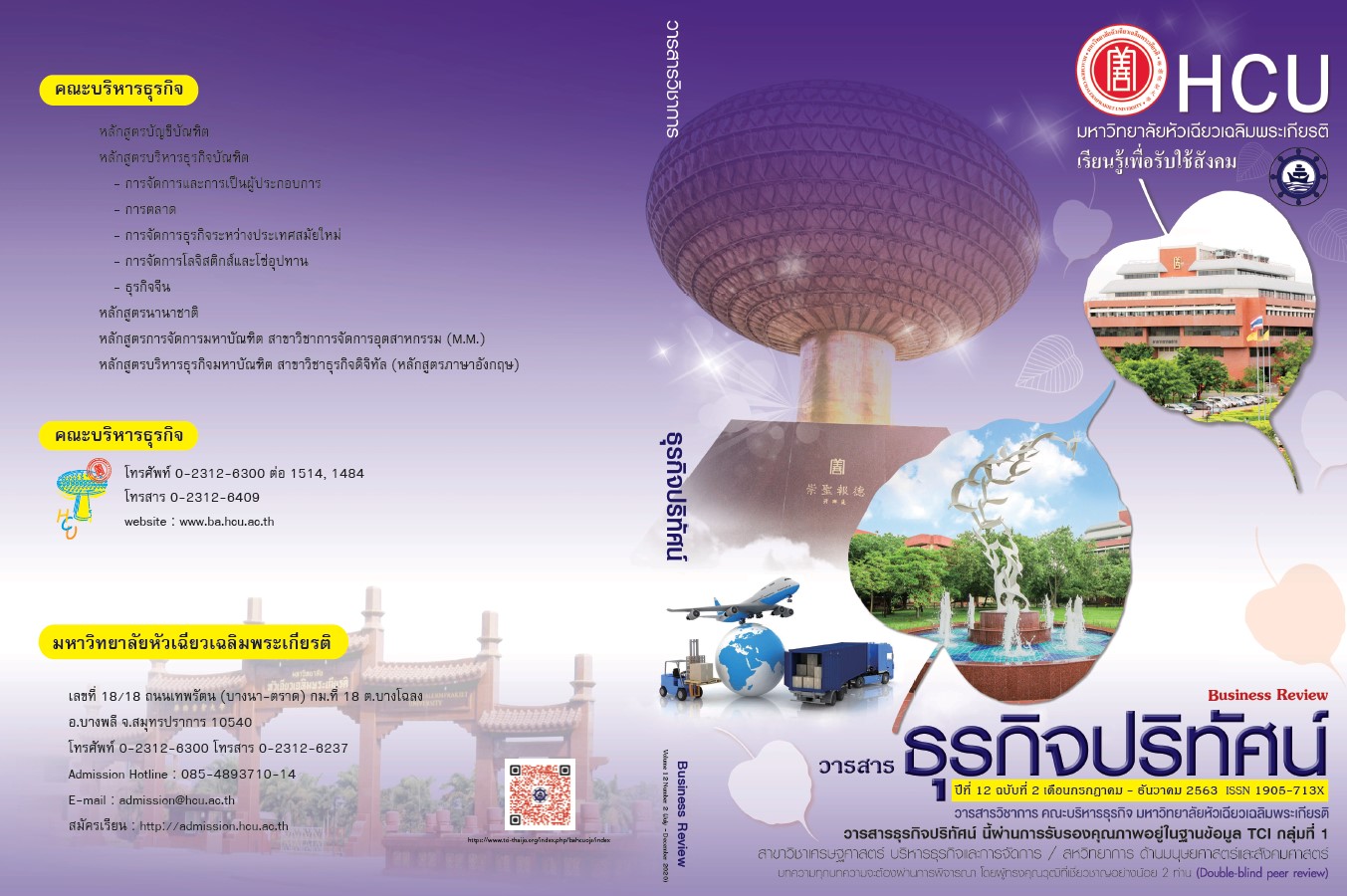The Idea of Scenery Town is Created. That is “Kankoumachizukuri” for Locally Economical, Social, Culture and Environmental Permanence.
Keywords:
scenery town, Kankoumachizukuri, tourism, permanenceAbstract
Tourism brings about to locally developmental permanence in many dimensions, such as economical, social, cultural and environmental aspects. Tourism itself is applied its local tourism resources to create tourism activities; consequently, to attract tourists to make a decision coming to the tourist-spot setting in its own area. Tourism itself creates lots of advantages to the local area in many dimensions; however, it also makes effects to the local area too. The idea of scenery town is created. “Kankoumachizukuri” is the model which the creator applies the idea for the way to develop, to adjust, and to protect the phenomenon occurred from tourism development. The real practice is created based on its own way and principle settled to the permanence of local development in all dimensions quoted above. Tourism related personnel participation is critically created for its management style; as a matter of fact, local tourism resources usage must be used under the idea of its own supreme benefit. The real tourism practice focuses on all tourism related people who get the effect of tourism practice in terms of their satisfaction ,reducing the conflict which may be occurred by tourism development.
References
การท่องเที่ยวและกีฬา. (2559). แผนพัฒนาการท่องเที่ยวแห่งชาติ ฉบับที่ 2 (พ.ศ. 2560-2564). กรุงเทพฯ: สำนักงานกิจการโรงพิมพ์
องค์การสงเคราะห์ทหารผ่านศึก.
กฤษณา บัวเข็มทอง. (2547). สังคมชนบทสู่สังคมเมือง, 1 พฤศจิกายน 2561.
http://readingthai.wisc.edu/Volume2/8immigration.pdf
คินโยบิ (นามแฝง). (2562). คาบาตะ เมื่อชีวิตและสายน้ำมาบรรจบกันที่ฮาริเอะ, 1 พฤศจิกายน 2561.
https://anngle.org/th/j-culture/kabata.html
งามนิจ กุลกัน. (2556). การจัดการองค์ความรู้ทางวัฒนธรรมท้องถิ่นของตำบลอ้อมเกร็ด อำเภอปากเกร็ด จังหวัดนนทบุรี. วารสาร
กระแสวัฒนธรรม, 14(28), 18-30.
ภัทรา แจ้งใจเจริญ. (2558). การจัดการการท่องเที่ยวเชิงวัฒนธรรมกรณีศึกษาชุมชนโอหงิมาจิ หมู่บ้านชิราคาว่าโก จังหวัดกิฝุ ประเทศ
ญี่ปุ่น. วิทยานิพนธ์ปริญญามหาบัณฑิต, มหาวิทยาลัยธรรมศาสตร์. กรุงเทพฯ.
บุญเลิศ จิตตั้งวัฒนา. (2556). การจัดการด้านการตลาดท่องเที่ยวอุตสาหกรรมท่องเที่ยว. กรุงเทพฯ : เพรส แอนด์ ดีไซน์.
พิมพ์ระวี โรจน์รุ่งสัตย์. (2556). การท่องเที่ยวชุมชน. พิมพ์ครั้งที่ 2. กรุงเทพฯ: โอเดียนสโตร์.
ศูนย์การวิจัยด้านการตลาดท่องเที่ยว. (2561). การท่องเที่ยวโดยชุมชนอย่างยั่งยืน, 7 พฤษภาคม 2562.
http://www.tatreviewmagazine.com/article/cbt-thailand/
阿比留勝利. (2003). 求められる地域性と国際性が融合する観光まちづくり. North East Think Tank of Japan, 43(4), 13-
観光まちづくり推進協議会. (2004). 東京都観光まちづくり基本方針. 東京都: 観光まちづくり推進協議会.
観光まちづくり研究会. (2000). 観光まちづくりガイドブック 財. 大阪: アジア太平 洋観光交流センター.
日本観光協会. (2001). 21 世紀 “世界の交流舞台”を築く”を築 く観光地づくりの手 法―優秀観光地づくり 賞. 東京都:
受賞観光地に学ぶ.
日本観光協会. (2003). 新世紀の観光地域づくりの手法. 東京都: 日本観光協会.
野原卓. (2008). 観光まちづくりを取り巻く現状と可能性. 季刊まちづくり. 大学院 都市イノベーション研究院都市イノ
ベーション部門横浜国立大学, 19(2), 30-37.
Downloads
Published
How to Cite
Issue
Section
License
All articles published in the Business Administration and Management Journal Review are copyrighted by the journal.
The views and opinions expressed in each article are solely those of the individual authors and do not represent those of Huachiew Chalermprakiet University or any other faculty members. Each author is fully responsible for the content of their own article. Any errors or issues found are the sole responsibility of the respective author.




